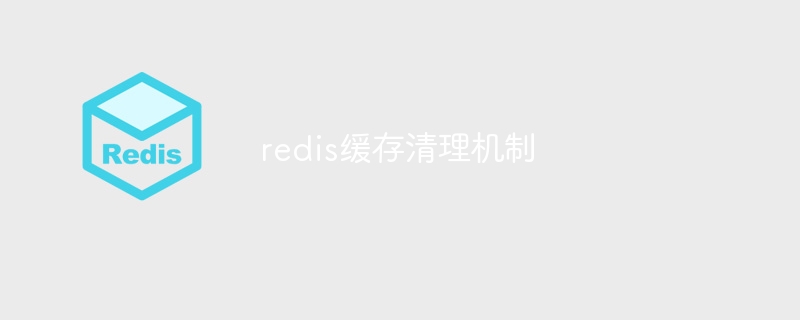Redis cache cleaning mechanism adopts elimination strategy, memory overflow strategy and manual elimination to free up space to accommodate new data. Commonly used elimination strategies include LRU, LFU, and FIFO; memory overflow strategies include volatile-lru, volatile-lfu, and allkeys-lru. Additionally, Redis supports lazy deletion and manual eviction using the DEL and UNLINK commands to help maintain cache validity.

Redis cache cleaning mechanism
Redis cache cleaning mechanism answers the following questions:
Detailed explanation of cache cleaning mechanism:
Redis provides a variety of cache cleaning mechanisms to ensure that space can be released to store new data when the cache capacity is insufficient. These mechanisms include:
Elimination strategy: Redis selects cache items to be deleted when space needs to be made according to a specific eviction strategy. The most common strategies are:
Memory overflow policy: When the memory used by the Redis process exceeds its configured limit, Redis will trigger the memory overflow policy. This policy allows Redis to release idle memory to avoid the process being terminated by the operating system. The most common strategies are:
volatile flag. volatile flag. volatile flag is present, until sufficient memory is freed. DEL and UNLINK. These commands allow developers to delete specific cache items as needed. Expiration Time (TTL), Redis will not delete it immediately, but will delete it on the next access. Choose the appropriate cleaning strategy:
Choosing the best cache cleaning strategy depends on the specific needs of your application. For most applications, the LRU policy is usually a solid choice because it balances the freshness of cache items with the need to free up space. However, for high-traffic environments or applications where data changes frequently, an LFU or FIFO strategy may be more appropriate.
The above is the detailed content of redis cache cleaning mechanism. For more information, please follow other related articles on the PHP Chinese website!
 Commonly used database software
Commonly used database software
 What are the in-memory databases?
What are the in-memory databases?
 Which one has faster reading speed, mongodb or redis?
Which one has faster reading speed, mongodb or redis?
 How to use redis as a cache server
How to use redis as a cache server
 How redis solves data consistency
How redis solves data consistency
 How do mysql and redis ensure double-write consistency?
How do mysql and redis ensure double-write consistency?
 What data does redis cache generally store?
What data does redis cache generally store?
 What are the 8 data types of redis
What are the 8 data types of redis




